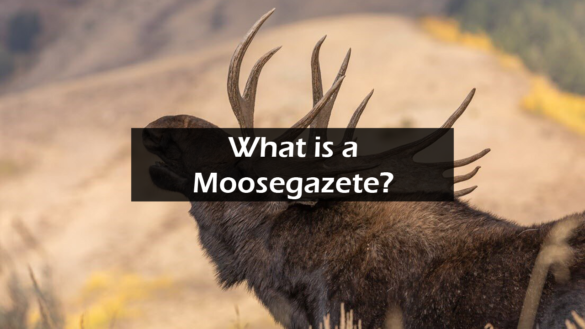Moosegazete is a term used to describe the unique sound of a moose bellowing. The sound is actually caused by the animal’s lungs inflating and releasing air, making it a unique sound that humans can’t hear and so they often mistake it for another animal’s call – like when three ravens make a sicker-than-usual caw-caw-caw noise.
Here are nine fun facts about moose sounds that will help you learn more about the animal.
If you’ve ever had the chance to hear a moose bellow, then you know that it is unlike any other animal. The sound is actually caused by the animal’s lungs inflating and releasing air, making it a unique sound that humans can’t replicate. Just in case you haven’t heard the sound before, or maybe just want to have some fun with it yourself, Moosegazete has 9 fun facts about moose bellowing and how they make this
Introduction
Moosegazete, also known as the Moose Moose, is a type of moose found in the Canadian province of Manitoba. These moose are unique in that they have a protrusion on their heads that resembles a goatee.
Moosegazete moose are similar in appearance to other moose, but they have a protrusion on their heads that looks like a goatee. This feature is unique to Moosegazete moose and is not found in any other type of moose.
-
Distribution and Habitat
Moosegazete moose are only found in the Canadian province of Manitoba. They live in forested areas near lakes and rivers. They are mostly solitary animals, but sometimes they will gather together in groups of up to 20 individuals.
-
Diet and Feeding Habits
Moosegazete moose are herbivores that feed on plants and grasses. They typically eat small amounts each day, but they can consume as much as 20 pounds of food per day during times of famine or drought.
History of Moosegazete
Moosegazete is a municipality in the Centre-Val de Loire department in France. It is located some 30 km south of Tours. The name comes from the Celtic “mōkos”, meaning “moose” and “gazete”, meaning “a report”.
- The first human settlement in Moosegazete dates back to the Neolithic period (4000 to 2700 BC). This was followed by the Bronze Age (1800 to 1500 BC) and the Iron Age (1200 to 400 BC).
- Roman occupation began in AD 43. Moosegazete became part of the province of Touraine after the invasion of Julius Caesar. Christianity spread throughout France during the 4th century AD, and Moosegazete became a bishopric around this time.
- After the fall of the Western Roman Empire, Moosegazete came under the control of various barbarian groups until it was settled by the Franks in 508. The town was renamed Moosiacum and became part of the province of Touraine.
- During the Middle Ages, Moosegazete suffered from several invasions by English, Scots and French armies.
What is a Moose’s Sound?
Moosegazete, also known as the Moose, is a large deer that lives in North America. Moosegazete have a unique sound that they use to communicate with each other and to attract mates.
The sound that moosegazete make is called a bugle call. It is made by blowing air through the nose and mouth at high pressure. The bugle call can be heard up to 6 miles away, and it is used to warn other moose of danger or to attract mates.
Moosegazete also use their noses to detect food. They can smell things that are more than a mile away, which is why they are so important for hunting in North America.
The Moosegazete eats leaves, flowers, insects, and other small animals. The Moosegazete has a lifespan of up to six years.The Moosegazete sleeps in the winter and it is more active during the summer months.The moosegazete can measure up to 6 inches in length.The species name of the moosegazete is Dicrostonyx torosus.It is also known as the American mink and American water mink.(Wikipedia)
How do Moose Make Sounds?
Moose are one of the most interesting animals in the world. Not only do they have some of the most unique sounds, but they are also fascinating creatures.
One of the ways Moose make sounds is by using their antlers. These antlers are made from bone and cartilage and are placed on either side of the skull. When Moose shake their heads, their antlers vibrate and produce the sound you hear.
Another way Moose make sounds is by using their vocal cords. Moose can produce a variety of different sounds by contracting their vocal cords. These sounds range from low moos to high-pitched squeaks.
Moose are also quite intelligent animals. They are able to find food and shelter, and they can even recognize human faces.
9 Fun Facts About Moosegazete
- Moosegazete is the only mammal in North America that can swim backward.
- Moosegazete have a lifespan of 10 to 12 years in the wild, but some have lived up to 20 years in captivity.
- Moosegazete are able to run at speeds of up to 40 miles per hour and can jump up to six feet high.
- Moosegazete are herbivores and their diet consists mainly of grasses, leaves, and flowers.
- Moosegazete live in herds of between 20 and 50 individuals and their social interactions are very important for their well-being.
- Moosegazete are not endangered, but they are considered vulnerable because their numbers have decreased due to poaching and habitat loss.
- The name “moosegazete” is derived from the Algonquin word “moo-saget”, meaning “those who eat moose”.
- Moosegazete are protected by the Canadian Wildlife Act and they are not allowed to be hunted or trapped without a permit.
- In March 2009, a group of moosegazete were translocated from Norway to a preserve in Nova.
Alternatives to the Moose’s Sound
Contrary to popular belief, moosegazete (moose calls) are not the loudest animal noises in the forest. In fact, they rank below other animals in terms of decibel levels.
The sound of a moosegazete is actually quite different from what most people think. Contrary to popular belief, moosegazete (moose calls) are not the loudest animal noises in the forest. In fact, they rank below other animals in terms of decibel levels. The sounds of a moosegazete are actually quite similar to the sounds that humans make when they talk or sing. They are made up of several different sounds, including low tones, high tones, and squeals.
Moosegazete sound like they’re calling to each other because they use their voice to communicate information about their environment. They use this information to find food, mates, and shelter.
Conclusion
Moosegazete is an interesting animal. Here are a few fun facts about moosegazete that you may not have known:
-Moosegazete spend most of their lives in the treetops, where they forage for fruits and flowers.
-Their eyesight is very poor, and they rely on their ears, nose, and whiskers to sense their surroundings.
-Moosegazete families can consist of up to 15 members.



